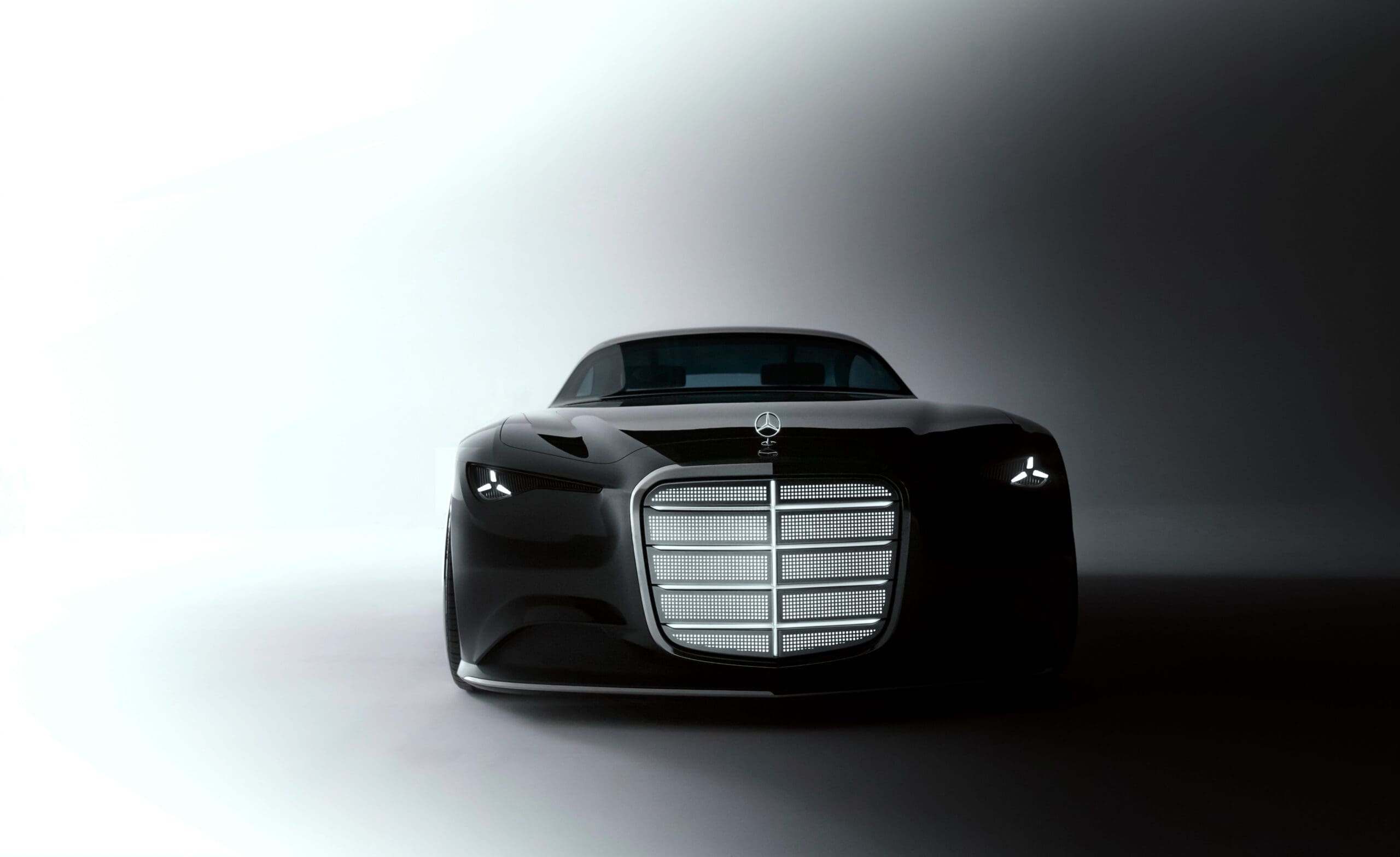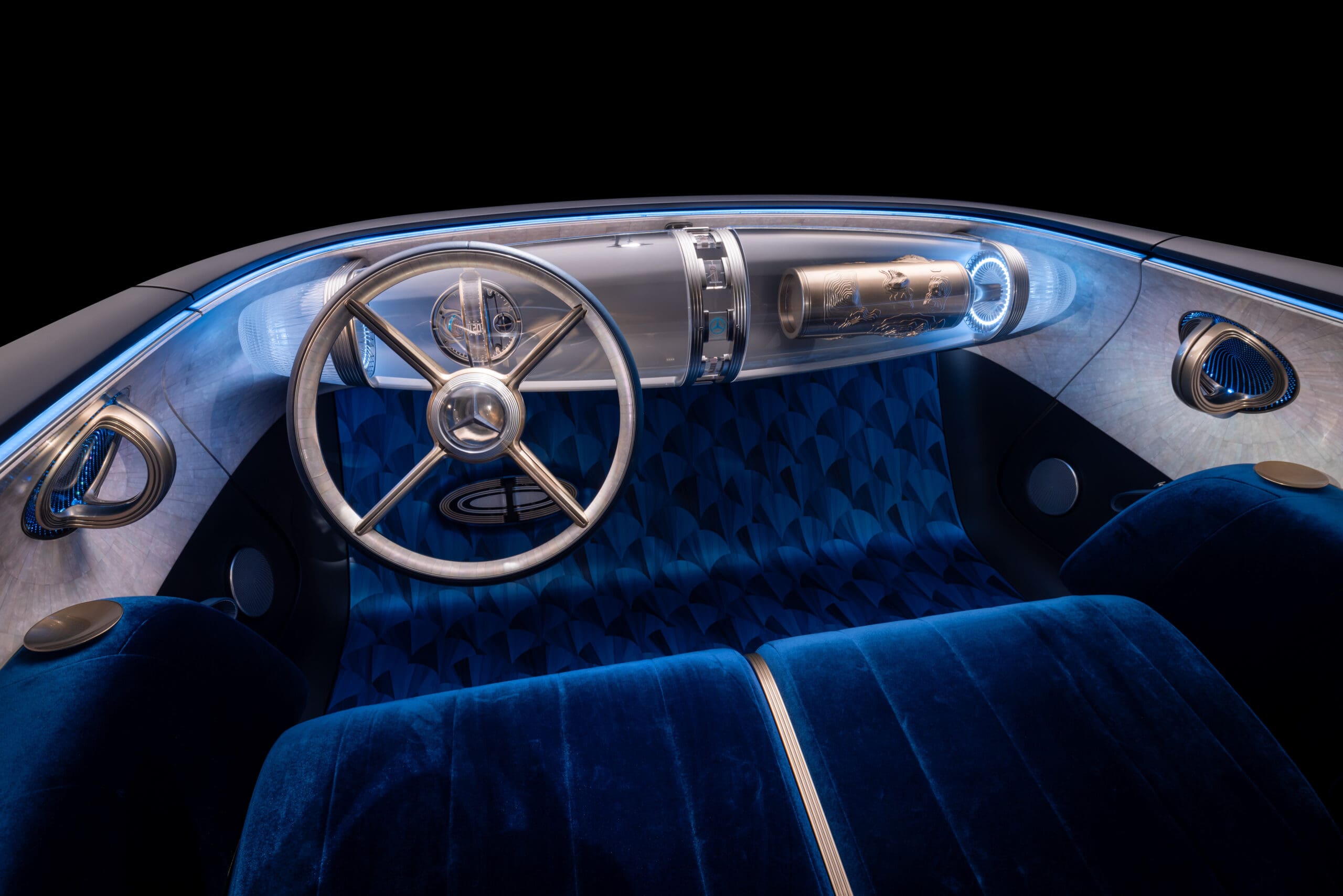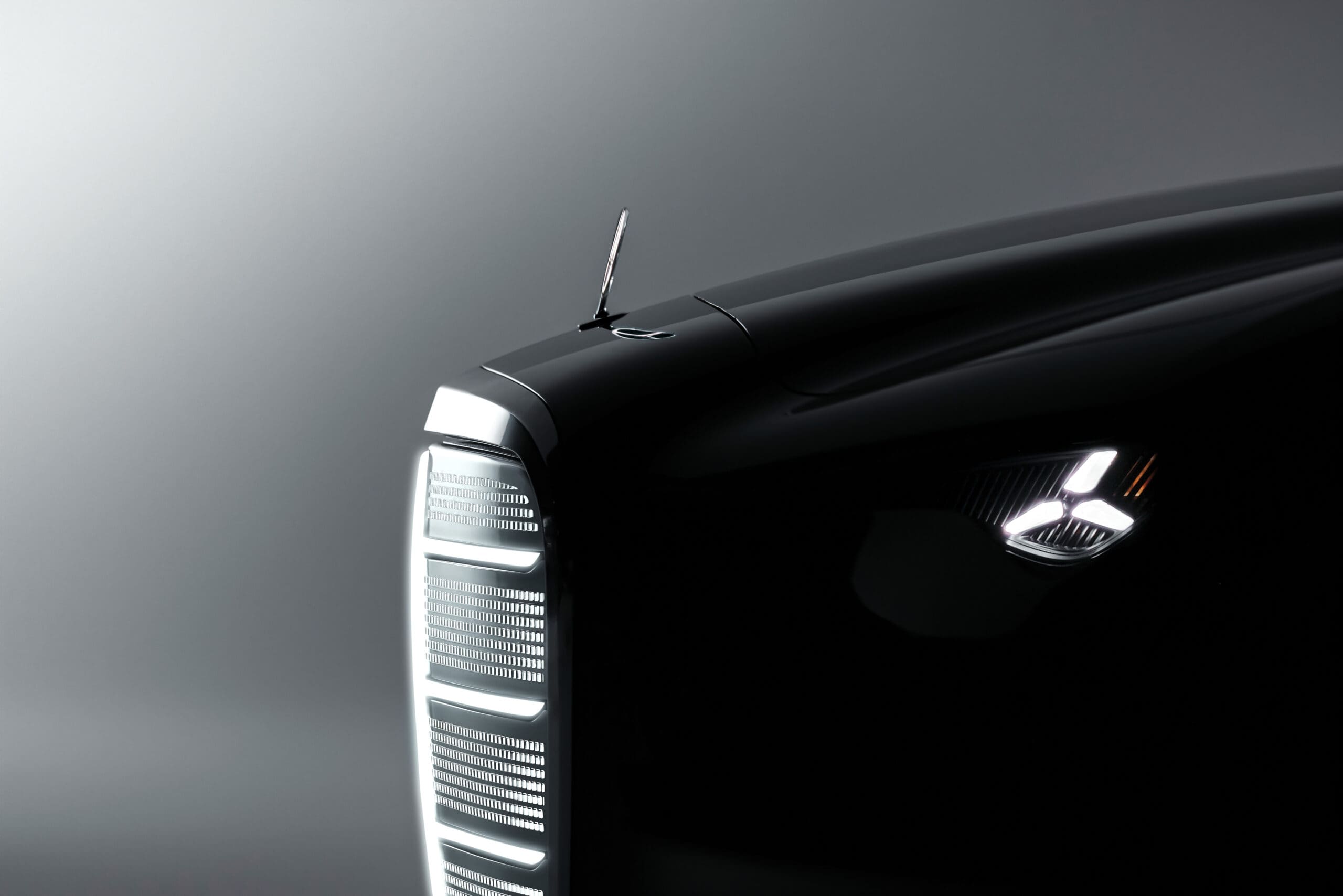Mercedes-Benz has never been a brand to chase trends. Its strongest work has always come from building on its own legacy, a quiet confidence drawn from more than a century of engineering and design. With the Vision Iconic, the company reasserts this position, presenting a vehicle that merges its historical design language with forward-thinking technology in a seamless, deliberate way.
Recent Mercedes-Benz EVs have often favored smooth, softened forms that support efficiency but risk diluting the brand’s design identity. The latest models, like the new GLC, have started to correct that with more confident proportions and clearer detailing.
Unveiled during Shanghai Fashion Week, the Vision Iconic is more than a show car. It is a design study, a platform for innovation, and a signal of how Mercedes sees its future: electric, autonomous, and unmistakably its own.

The Return Of Presence
The Vision Iconic immediately commands attention with its proportions. Long, sculptural lines and an upright stance recall the stately presence of the 1930s and 1960s Mercedes sedans. The design is not retro. It is foundational. The wide chromed grille structure, what Mercedes now calls the iconic grille, draws from models like the W108 and 600 Pullman, reinterpreting their upright dignity for the electric era.
This grille, framed in polished chrome and overlaid with a smoked-glass lattice, is not only a design flourish. It integrates digital lighting, animations, and contour illumination to create a new brand signature for a world increasingly defined by screen-based identity. The illuminated hood ornament, paired with ultra-slim headlights and a deep gloss black exterior, turns the car’s face into a moving sculpture.

Interior As A New Kind Of Space
With automated driving shaping the future of mobility, Mercedes has used Vision Iconic to rethink the cabin experience. The interior blends old-world craft with digital subtlety. Art Deco influences are evident throughout: in the flowing lines, inlaid mother-of-pearl panels, and polished brass hardware. The floor is finished in straw marquetry, a decorative technique dating back to the 17th century and revived in the 1920s, now adapted for the 21st.
At the center of the dashboard floats a glass structure known as the Zeppelin. It houses a mix of analogue and digital instruments, activated by a cinematic mechanical sequence inspired by chronographs. A screen spans the full width of the cabin but remains secondary to the tactile and material richness that defines the space. One of the instruments doubles as an AI interface, shaped like the Mercedes star, offering a quiet integration of digital assistance.
The lounge-like layout, including a wide, velvet-upholstered front bench seat, reflects a shift in how occupants will use cars once driving becomes optional.


Intelligent Technology, Thoughtfully Applied
Vision Iconic is also a showcase for Mercedes-Benz’s research into more efficient, scalable technology. The solar paint applied to its bodywork can harvest energy passively, delivering up to 12,000 kilometers of additional driving range annually under ideal sunlight. The material is recyclable and avoids rare earths or silicon, aligning with long-term sustainability goals.
More significantly, the concept introduces neuromorphic computing. By mimicking the way the human brain processes information, this architecture can reduce the energy demands of autonomous driving systems by up to 90 percent. This not only improves efficiency but also allows the car to process complex traffic environments more quickly and with greater reliability.
Paired with Level 4 automated driving, the Vision Iconic offers a scenario where the driver can completely disengage on suitable roads. The car also features steer-by-wire, eliminating the mechanical link between the steering wheel and the front wheels. This makes tight urban maneuvering easier and creates more flexibility for interior design.

Beyond The Vehicle
Mercedes-Benz extended the Vision Iconic concept beyond the automobile. A six-piece capsule fashion collection debuted alongside the car, drawing from its colors, textures, and graphic language. The garments use deep blue tones and silver-gold accents in patterns that mirror the vehicle’s Art Deco geometry. The result is cohesive and deliberate, not merchandise but an extension of design philosophy.
A new ICONIC DESIGN book also accompanies the launch, documenting the thinking behind this new chapter. It frames the Vision Iconic as part of a larger evolution, a brand reaffirming its values while building toward a world that demands clarity, identity, and refinement.
In every detail, Vision Iconic is a reminder that Mercedes-Benz does not need to reinvent itself. It only needs to look inward and move forward.
Read more about cars here.